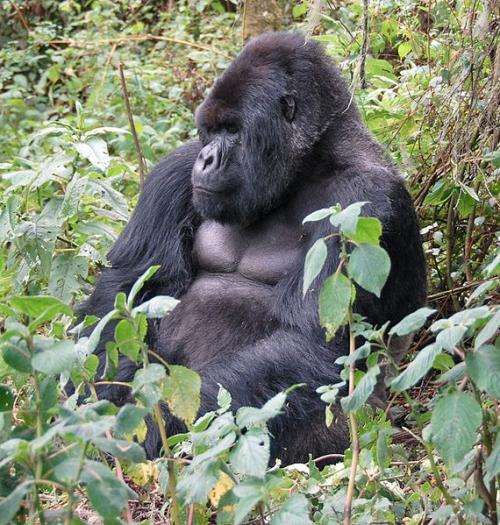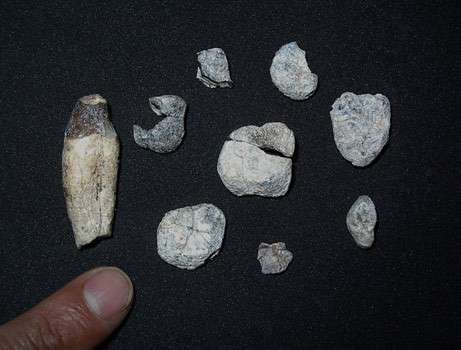February 11, 2016 weblog
Gorilla fossil suggests split from humans as far back as 10 million years ago

(Phys.org)—An international team of researchers studying fossils unearthed in Ethiopia's Chorora Formation in the Afar rift has dated some gorilla teeth fossils to approximately 8 million years ago, which the team suggests, shows that the human gorilla split had to have occurred at least 10 million years ago. The team has published a report of its findings and theories in the journal Nature.
Scientists have been trying for quite some time to nail down the earliest parts of human evolution, but have been stymied by a lack of fossil evidence. Geneticists have shown that humans and great apes share a common lineage, which has led to efforts by archeologists and others to find evidence of when splits occurred between gorillas and later chimps, our closet ancestor. Genetic evidence has suggested that humans split from chimps as recently as 5 million years ago and with gorillas approximately 7 to 8 million years ago. But these findings have conflicted with archeological findings. In this new effort the rift has widened even further as new evidence suggests at least one of the splits may have occurred much farther back in time.
Back in 2007 a team of researchers found nine ancient gorilla teeth fossils at the Chorora Formation—the extinct species was given the name Chororapithecus abyssinicus. Since that time the researchers with this new effort have been working on ways to date the teeth—they have examined volcanic rock samples and particles of sediment that are known to have been magnetized at one point, from areas both above and below where the teeth were found. In analyzing their data, the team has come to believe that the teeth are from approximately 8 million years ago. Their findings suggest that the fossilized teeth represent the oldest mammalian fossils found south of the Sahara desert area, which, the team claims, adds credence to the theory that apes and thus humans originated in Africa, not Eurasia as some have claimed.

The team's findings also suggest that because C.abyssinicus dates back to 8 million years ago, the split with humans must have occurred at least 10 million years ago, much further back than any other evidence has shown to date.
More information: Shigehiro Katoh et al. New geological and palaeontological age constraint for the gorilla–human lineage split, Nature (2016). DOI: 10.1038/nature16510
Abstract
The palaeobiological record of 12 million to 7 million years ago (Ma) is crucial to the elucidation of African ape and human origins, but few fossil assemblages of this period have been reported from sub-Saharan Africa. Since the 1970s, the Chorora Formation, Ethiopia, has been widely considered to contain ~10.5 million year (Myr) old mammalian fossils. More recently, Chororapithecus abyssinicus, a probable primitive member of the gorilla clade6, was discovered from the formation. Here we report new field observations and geochemical, magnetostratigraphic and radioisotopic results that securely place the Chorora Formation sediments to between ~9 and ~7 Ma. The C. abyssinicus fossils are ~8.0 Myr old, forming a revised age constraint of the human–gorilla split. Other Chorora fossils range in age from ~8.5 to 7 Ma and comprise the first sub-Saharan mammalian assemblage that spans this period. These fossils suggest indigenous African evolution of multiple mammalian lineages/groups between 10 and 7 Ma, including a possible ancestral-descendent relationship between the ~9.8 Myr old Nakalipithecus nakayamai8 and C. abyssinicus. The new chronology and fossils suggest that faunal provinciality between eastern Africa and Eurasia had intensified by ~9 Ma, with decreased faunal interchange thereafter. The Chorora evidence supports the hypothesis of in situ African evolution of the Gorilla–Pan–human clade, and is concordant with the deeper divergence estimates of humans and great apes based on lower mutation rates of ~0.5 × 10−9 per site per year.
Journal information: Nature
© 2016 Phys.org



















